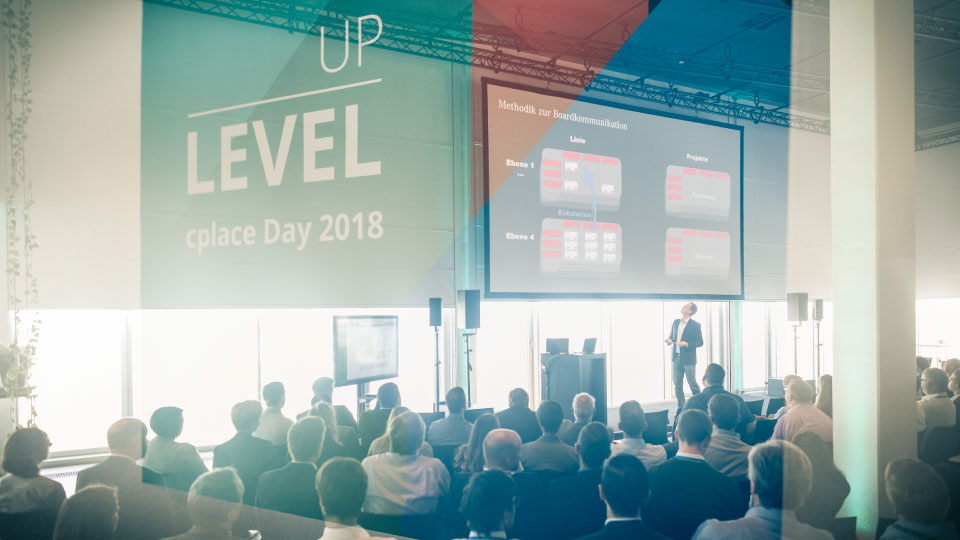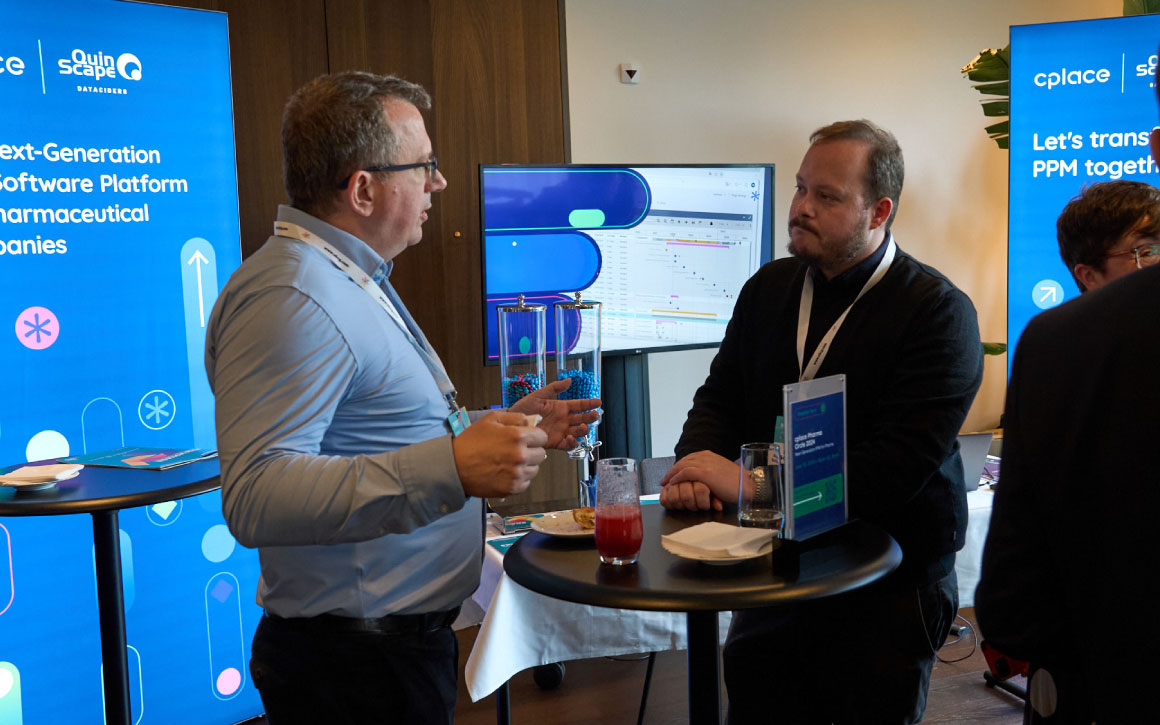10 years of collaboration Factory – a PPM success story
March 25, 2024 | 6 min
March 25, 2014, is a special day in the history of cplace. Exactly ten years ago, Dr. Rupert Stuffer founded collaboration Factory and laid the foundation for revolutionizing project and portfolio management. His mission: to develop an innovative and modern PPM software called cplace. What started out small has developed into a true success story within a decade. Today, cplace is not only used by all German car manufacturers and well-known suppliers, but also in many other sectors, such as the pharmaceutical and aerospace industries. In this blog post, our CEO talks about his vision and takes a look back at the time when cplace was still in its infancy.

Rupert, you founded the collaboration Factory in 2014. What was your motivation?
I was already active in the PPM environment for several years with my former company, but only in a small specialist niche. We learned how poorly users are supported in practice by traditional PPM software, how many gaps and acceptance hurdles there are and how many methodological innovations are still needed. This was the reason for me to consciously start again on a greenfield site – i.e. without the technical legacy and methodological limitations of a previous product. My inventive spirit was awakened: I wanted to further develop a market that was very weak in innovation with new technologies and new methodological approaches.
How did you approach the whole thing? How was the foundation stone for the collaboration Factory laid?
My original idea was to supplement existing software products with small, innovative apps and offer consulting services for them. Through a Munich start-up network, I then came across a software company spun off from the Technical University of Munich. Their software product made it possible to build model-based, dynamic data models and flexible user interfaces in real time. I had always wanted this level of flexibility for project management. After acquiring the rights to the software, I started to think bigger. That was the starting signal to found collaboration Factory.
How did you manage to finance it all back then?
I financed the foundation and initial growth steps privately. When the great potential was confirmed in the first customer projects, it quickly became clear that additional growth financing was needed. I then approached the Schatt family. Walter Schatt is a very committed and successful founder and entrepreneur and has built up Schattdecor in Rosenheim to become the world market leader in the decor printing industry.
The first conversations between him, a seasoned entrepreneur from the manufacturing industry, and me, a software entrepreneur, were quite exciting. He didn’t have much to do with software. And then I came along and talked about my ideas and the value and potential of the software – even though hardly anyone was using the software at the time, and we were still making very little turnover. After several rounds of talks, we came together, supported by a great leap of faith on the part of the Schatt family. Without this support, we would have been much too slow in the dynamic IT environment. We owe a lot to the Schatt family for their great support on our journey.
The collaboration Factory had very big-name customers right from the start – initially from the automotive industry. How did you manage to get global corporations to trust a small, unknown start-up?
To be honest, at first, I couldn’t imagine how this could happen so quickly. As a software provider, we were far too small and too young to attract the attention of large corporations. We had little money, no references and the technology had not yet been tested in practice. From a corporate perspective, these were all red lights.
At my previous company, I knew a lot of automotive experts to whom I repeatedly showed initial demos, prototypes, and solutions. Although they thought the ideas were great, they told me that it wouldn’t work out because of the risks I mentioned. But we kept at it. When things got more serious, our partner company MHP stood up with a broad chest and offered its support. They gave us a chance and wanted to test the technology in initial smaller projects. The projects worked and quickly grew. cplace had arrived in the automotive industry.
Our experience at the time was that no one wanted to be the first to make a bad decision that would ultimately turn out not to work with a start-up or this new software. Once two or three companies had said “yes”, it was much easier for all subsequent customers. Without real pioneers on the customer side, the first projects would not have been possible.
Were you aware at the time of what the small start-up could become?
As a founder, you always must be optimistic (laughs). But of course, I didn’t know how far it could go at first. With more than 20 years of experience under my belt, I was aware of the demand in the industry and the potential of the ideas. What we didn’t know was how far the technology would go and whether we would be able to build a powerful organization. Over the ten years, the software and the company have of course grown to meet their challenges and are far from having reached the end of their possibilities.
… and now in 2024 there is a company with around 180 employees and many well-known customers from various industries…
Initially, I had the idea of building a small software boutique with up to 50 employees. I wanted to keep the whole thing lean. When we realized that there was so much more to be gained from the cplace product and that the platform offered enormous potential beyond project management, I knew that it couldn’t work with just 50 people. However, I wouldn’t want to measure success in terms of key figures. It was clear to me that if we build something innovative that works, it is very likely to be successful. And if a company is successful, it must and will grow. My personal target figure for success is not the size of the company, but the innovative power that we bring to the market and to our customers.
What is special about the product and company for you?
For me, the company still has a special team spirit. I hope our employees feel the same despite the rapid growth. I believe that, with ups and downs, we have succeeded quite well in preserving and developing this core. Our community approach, which I have anchored in the name “collaboration Factory”, is also special. We brought our partners on board right from the start. It would have been impossible to achieve this development on our own. I hope that the future will continue to be strongly shaped and driven by the cplace community. Many customer and partner heads contribute experience, creativity, and a great deal of implementation energy. A strong community will decisively advance our ability to innovate. In addition, cplace brings great potential as a software technology. With its flexibility and model-based approach, the software is by far the most flexible and open solution on the project and portfolio management market.
Looking back over ten years, what were the biggest challenges during this time?
Building a functioning software company from scratch and making cplace enterprise-ready in every respect. In the beginning, cplace was only tested for a few users. Getting the software ready for operation in complex IT environments was a challenge for our young team. Constantly growing user numbers and data volumes required further development of the architecture. And when a large customer really put the pressure on, everyone had to pitch in. We really worked up a sweat during this time.
Our rapid growth was and is challenging. Setting up a broader portfolio, offering all the necessary services, maintaining the level of quality, building a community, and constantly developing… these are real challenges that can always cause stress.
Finally, let’s take a look into the future: what’s next?
As I have already mentioned, I would like to continue along the path of innovation that we have embarked on, both technically and professionally. We can now build on long-standing references, strong partnerships, and an investor with long-term planning. This opens up new opportunities. Of course, a lot depends on the economic situation, especially in our key sectors. This can sometimes slow us down and sometimes give us a boost. We currently have a difficult market and are still growing strongly, which is great. There is plenty of new potential in areas such as AI, citizen development, hybrid project management and more. If we do a good job, we will continue to be successful. It’s up to us! I am looking forward to the new challenges ahead.
About the Author
Julia Gerstner, Content Marketing, cplace
With its Next-Generation Project and Portfolio Management technology, cplace is revolutionizing and transforming the way people and organizations collaborate on complex projects. The flexible software platform enables leading companies to create customized solutions for digital transformation and developing complex products.
Go to LinkedIn Profile












